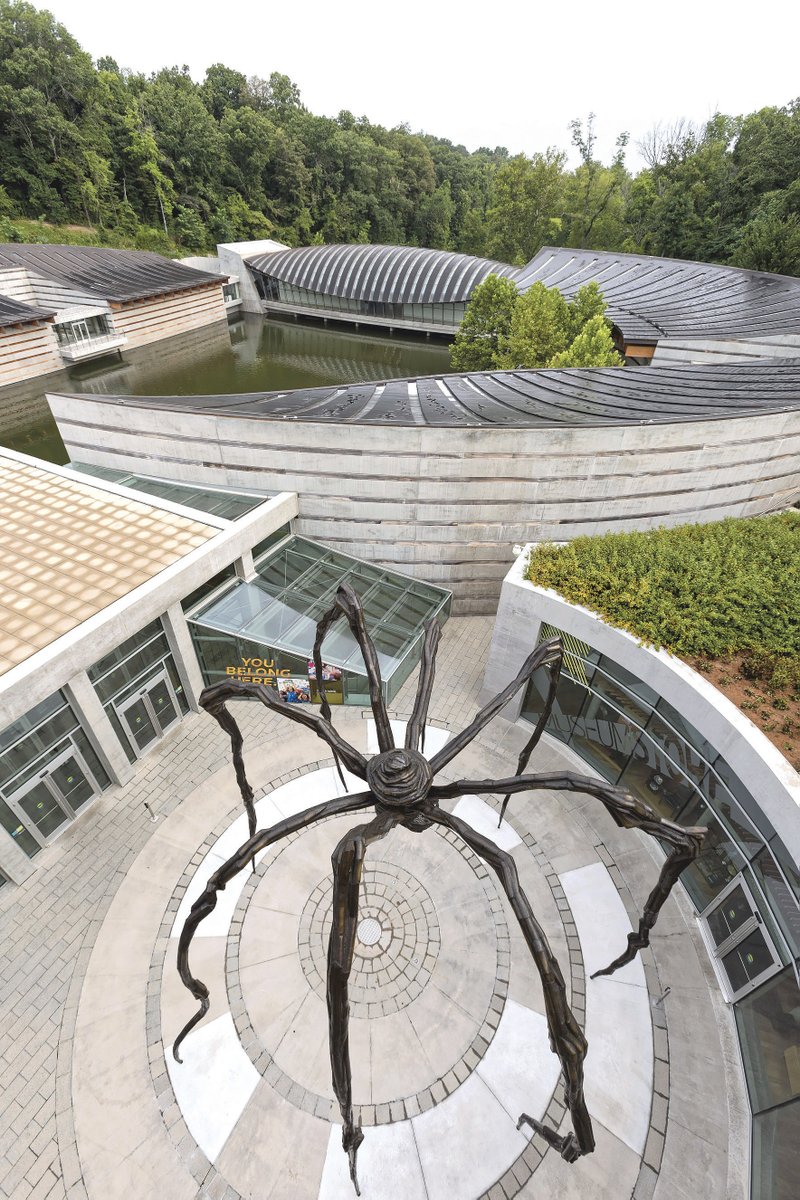Have you seen the giant spider looming over the south entrance to Crystal Bridges? The only way you haven't seen it is if you haven't visited the museum in the last two weeks -- because a 30-foot-tall spider sculpture formed from stainless steel and bronze is kind of hard to miss.
"Maman," created by French-American artist Louise Bourgeois in 1999, was acquired by Crystal Bridges Museum of American Art in Bentonville earlier this year along with two rare paintings by the artist. This is the first time the sculpture, which is the largest work of Bourgeois' career, has been exhibited in the United States.
FAQ
Louis Bourgeois’
Maman
WHEN — Maman is part of the permanent collection
WHERE — Lobby courtyard of Crystal Bridges Museum of American Art in Bentonville
COST — Free
INFO — crystalbridges.org
"We're honored to be able to fulfill the late artist's dream (to see 'Maman' exhibited in the U.S.)," says Beth Bobbitt, public relations manager at Crystal Bridges. "Putting 'Maman' in this space [over the entrance] offers an opportunity for a unique visitor experience, challenging our ideas of architecture and sculpture."
However, the installation of such a sculpture presented a unique set of issues for the museum staff. At more than 30 feet in length and height and weighing more than 20,000 pounds, "Maman" is the largest work to ever be displayed in the museum courtyard. It took five days for the team at Crystal Bridges, Nabholz Construction, engineers from Tatum & Smith Engineering and a consultant from More Transportation Inc. to complete the sculpture.
"The sculpture was offloaded in 18 parts on the loading dock and was meticulously assembled with a 15-ton fork lift and other tools," Bobbitt says. The installation teams "were all involved in determining how the space could support the machines and equipment needed. Once all of the legs were put together, the body was rigged and lifted with a 250-ton crane that sat 300 feet away on the front side of the museum."
The legs were lowered one-by-one into the lobby courtyard, with their weight supported by a gantry until final placement. The actual assemblage of the piece took only two days. The other three were spent on concrete construction at the base of the sculpture. One of the final steps was to attach the "feet," each one only a few inches wide, to the concrete base. Balanced on these eight leg-tips, the body of the spider holds 20 marble eggs, each weighing 20 pounds, in the underside of the wire-mesh abdomen.
With the negative reputation spiders have, some guests may see the arachnid as ominous or frightening. But Bourgeois said she felt spiders are a friendly presence. She created "Maman" (from French: mama) as an ode to her mother, a protective and helpful repairer -- the same way she viewed the spiders in her work.
The two newly acquired paintings by Bourgeois, "Connecticutiana" and "Untitled" joined her piece "Quarantania" in the museum's "1940 to Now" gallery.
"The [Bourgeois pieces] are a significant addition to our permanent collection," says Bobbitt.
Unlike "Maman," Bourgeois' paintings have been displayed in the United States before; however, Crystal Bridges is the first American museum to own any of the pieces. The other casts of "Maman" reside in Canada, Spain, Tokyo, South Korea, Qatar and London.
NAN What's Up on 08/14/2015

